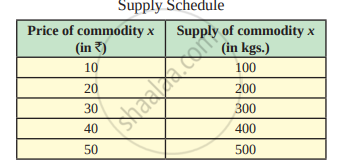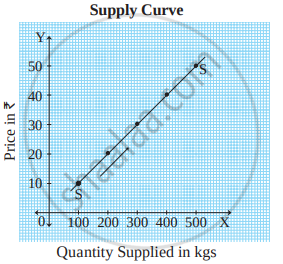Topics
Introduction to Micro and Macro Economics
Micro Economics
Macro Economics
Utility Analysis
- Utility
- Types of Utility
- Concepts of Utility
- Relationship Between Total Utility and Marginal Utility
- Law of Diminishing Marginal Utility
- Assumptions of Diminishing Marginal Utility
- Exceptions to the Law of Diminishing Marginal Utility
- Criticisms of the Diminishing Marginal Utility
- Significance of the Diminishing Marginal Utility
- Relationship Between Marginal Utility and Price
- Diminishing Marginal Utility
Demand Analysis
Elasticity of Demand
Supply Analysis
Forms of Market
Index Numbers
National Income
- Concept of National Income
- Features of National Income
- Circular Flow of National Income
- Different Concepts of National Income
- Methods of Measurement of National Income
- Output Method/Product Method
- Income Method
- Expenditure Method
- Difficulties in the Measurement of National Income
- Importance of National Income Analysis
Public Finance in India
Money Market and Capital Market in India
- Financial Market
- Money Market in India
- Structure of Money Market in India
- Organized Sector
- Reserve Bank of India (RBI)
- Commercial Banks
- Co-operative Banks
- Development Financial Institutions (DFIs)
- Discount and Finance House of India (DFHI)
- Unorganized Sector
- Role of Money Market in India
- Problems of the Indian Money Market
- Reforms Introduced in the Money Market
- Capital Market
- Structure of Capital Market in India
- Role of Capital Market in India
- Problems of the Capital Market
- Reforms Introduced in the Capital Market
Foreign Trade of India
- Internal Trade
- Foreign Trade of India
- Types of Foreign Trade
- Role of Foreign Trade
- Composition of India’s Foreign Trade
- Direction of India’s Foreign Trade
- Trends in India’s Foreign Trade since 2001
- Concept of Balance of Payments (BOP)
Introduction to Micro Economics
- Features of Micro Economics
- Analysis of Market Structure
- Importance of Micro Economics
- Micro Economics - Slicing Method
- Use of Marginalism Principle in Micro Economics
- Micro Economics - Price Theory
- Micro Economic - Price Determination
- Micro Economics - Working of a Free Market Economy
- Micro Economics - International Trade and Public Finance
- Basis of Welfare Economics
- Micro Economics - Useful to Government
- Assumption of Micro Economic Analysis
- Meaning of Micro and Macro Economics
Consumers Behavior
Analysis of Demand and Elasticity of Demand
Analysis of Supply
Types of Market and Price Determination Under Perfect Competition
- Market
- Forms of Market
- Market Forms - Duopoly
- Equilibrium Price
Factors of Production
- Factors of Production - Land
- Factors of Production: Labour
- Factors of Production: Capital
- Factors of Production - Feature of Capital
- Factors of Production - Organisation
Introduction to Macro Economics
- Features of Macro Economic
- Importance of Macro Economic
- Difference Between Mirco Economic and Macro Economic
- Allocation of Resource and Economic Variable
National Income
Determinants of Aggregates
- Total Demand for Good and Services
- Concept of Aggregate Demand and Aggregate Supply
- Consumption Demand
- Investment Demand
- Government Demand
- Foreign Demand
- Difference Betweeen Export and Import
- Effect of Population of Consumption Expediture
- Types of Investment Expenditure
- Micro Eco-Equilibrium
Money
- Meaning of Money
- Type of Money
- Primary Function
- Secondary Functions
- Standard of Deferred Payment
- Standard of Transfer Payment
- Money - Store of Value
- Concept of Barter Exchange
- Difficulties Involved in the Barter Exchange
- Monetary Payments
- Concept of Good Money
Commercial Bank
Central Bank
- Definition - Central Bank
- Central Bank Function - Banker's Bank
- Central Bank Function - Controller of Credit
- Monetary Function of Central Bank
- Non Monetary Function of Central Bank
- Method of Credit Control - Quantitative
- Repo Rate and Reverse Repo Rate
- Central Bank Function - Goverment Bank
Public Economics
- Introduction of Public Economics
- Features of Public Economics
- Meaning of Government Budget
- Objectives of Government Budget
- Features of Government Budget
- Public Economics - Budget (1 Year)(1 April to 31 March)
- Types of Budget
- Taxable Income
- Budgetary Accounting in India
- Budgetary Accounting - Consolidated , Contingency and Public Fund
- Components of Budget
- Factor Influencing Government Budget
Notes
Assumptions of the law :
The law of supply is based on the following assumptions :
1) Constant cost of production :
It is assumed that there is no change in the cost of production .A change in cost of production will affect the profits of the seller. Therefore less quantity will be supplied at the same price.
2) Constant technique of production :
It is also assumed that technique of production does not change. Improved technique of production may lead to an increase in production. This in turn may lead to an increase in the supply at the same price.
3) No change in weather conditions :
It is assumed that there is no change in the weather conditions. Natural calamities like floods, earthquakes etc. may decrease supply.
4) No change in Government policy :
It is also assumed that government policies like taxation policy, trade policy etc. remain unchanged.
5) No change in transport cost :
It is assumed that there is no change in the condition of transport facilities and transport cost. For example, better transport facility increases supply at the same price.
6) Prices of other goods remain constant :
Prices of other goods are assumed to remain constant. If they change, the law of supply may not hold true because producer may transfer resources to other products.
7) No future expectations :
The law also assumes that the sellers do not expect future changes in the price of the product.
Law of supply is explained with the help of the following schedule and diagram :

It explains the direct relationship between price and quantity of commodity supplied. When price rises from ₹10 to ₹20, 30,40 and 50, the supply also rises from 100 to 200,300, 400 and 500 units respectively. It means, when price rises supply also rises and when price falls supply also falls. Thus, there is direct relationship between price and quantity supplied which is shown in following figure:

In the figure above, X axis represents quantity supplied and Y axis represents the price of the commodity. Supply curve 'SS' slopes upwards from left to right which has a positive slope. It indicates a direct relationship between price and quantity supplied.
